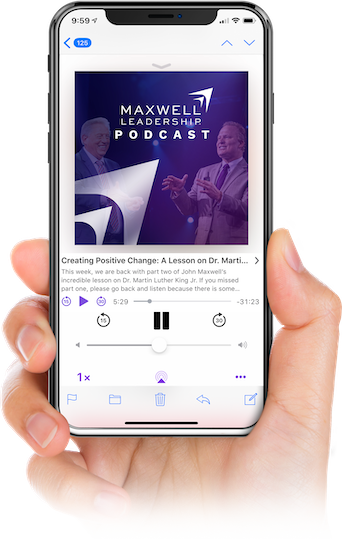A Leader’s First Challenge: Moving From Soloist to Conductor

I did It! After 4-years of hard work as a salesman for a major computer manufacturing company, I was promoted to a first-line sales manager. The company moved me to a new city where I would get a new team, and I would be the new boss. It was everything I had worked for; the attainment of a goal set all those years ago. So, why was I not better prepared for what was now required of me?
As the first two weeks quickly became the first two months, I began to learn how important it is for a leader to make the important shift from being an individual contributor to being the leader of other individual contributors. John Maxwell calls it in his book Leadershift, the shift from soloist to the conductor.
Can’t I Just be Super-Soloist?
The temptation was not to shift and instead become super-soloist on all the songs my team played. This, of course, is not scalable and a recipe for disaster when it comes to leading anything. Great leadership aims to have a genuine willingness and a real commitment to lead others to achieve a shared vision and goals through positive influence. No leader can ever achieve anything significant or long-lasting by themselves.
The Common Language of Conducting
The 5 Levels of Leadership are our common language and roadmap for moving from soloist to conductor. When you become the conductor, you immediately become responsible for all the soloists, and it becomes your job to help get the best performance possible from each of them.
At Level 1, they follow you because they have to; you’re the conductor. But that’s no way to lead an orchestra. You begin immediately to learn about the individuals on your team, their strengths, their weaknesses, their goals, and aspirations. There is a shift from following because they have to, to following because they want to. You are developing buy-in from each person. They know that you value them and need them for this team to succeed. You just achieved Level 2 of the five levels.
At Level 3, you produce results together with the individuals on your team. You set goals, set a standard for performance, set clear expectations, and hold each other accountable. This is where leaders get their credibility. If you can’t produce results, you won’t be in leadership very long.
At Level 4, you invest in the leadership capabilities of individual members of your team. This is the leader’s greatest return, where you see exponential growth in your business because leadership is multiplied.
Spotlights and Soloists
A soloist moving to conductor needs to develop a mindset for wanting to see others shine more than you. This is a giant leap if you were always shining bright as a soloist, and now you need to move that spotlight from you to allow the other soloist’s shine.
Leonard Bernstein once said, “The most difficult instrument to play in the orchestra is second fiddle.” But that’s where great leaders and great conductors excel; they want to see every person in the orchestra succeed.
Is Leadership Lonely at the Top?
If it is, you probably are not doing leadership correctly; you are playing the soloist, not the conductor. As John says, you will not be successful unless a lot of other people want you to be. Every conductor knows that if the rest of the orchestra is not at their best, it really doesn’t matter how good a soloist you used to be. You need every member playing to their best and playing to their strengths. When you can do this, you can take your orchestra to the highest levels possible.
About Perry Holley
Perry Holley is a coach and facilitator with Maxwell Leadership’s Corporate Solutions Group as well as a published author. He has a passion for developing others and seeing people grow into the leaders they were intended to become.
More Articles

Prepping for the New Year in 3 Simple Steps

High Impact Leadership vs. Traditional Leadership: What Sets Them Apart?









Be the first to comment on "A Leader’s First Challenge: Moving From Soloist to Conductor"